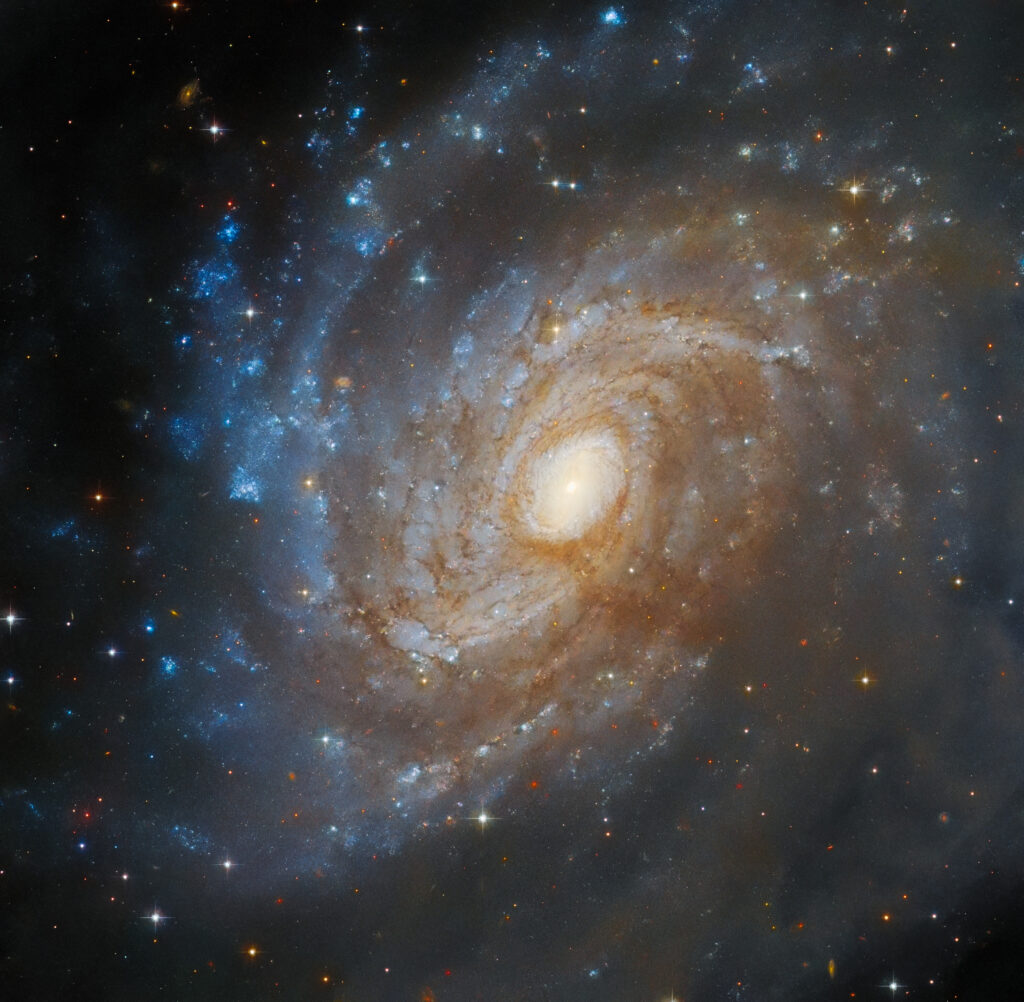Astronomers working with the Hubble telescope have published a new image. The galaxy IC 4633 can be seen on it.

IC 4633 is classified as a compact spiral galaxy. It is located at a distance of 100 million light-years from Earth in the direction of the constellation Apus. IC 4633 is actively forming new stars, as demonstrated by the clusters adorning its spiral arms, consisting of young blue luminaries. The galaxy also has a bright core, which indicates the processes of absorption of matter by a supermassive black hole going on there.
But, although IC 4633 is very well located “facing” the Earth, astronomers still cannot fully study all the processes going on in it — at least in visible light. If you look closely, you can see that part of the galaxy is hidden by a dark cloud that consists of dust.
This dust has nothing to do with IC 4633. In fact, it is part of the dark nebula MW9, which is also known by the nickname South Celestial Serpent. It is a huge thread stretching across the sky, consisting of gas and dust. There is not a single star in it and it is illuminated only by the light of neighboring luminaries.
The South Celestial Serpent is part of the Chameleon star-forming region, located 500 light-years from Earth. Its dark clouds occupy a significant part of the southern sky, covering not only the constellation of the same name, but also its neighbors like Apus, making optical observations difficult. To “break through” them, astronomers have to use instruments capable of shooting in the infrared range.
According to https://esahubble.org
Follow us on Twitter to get the most interesting space news in time
https://twitter.com/ust_magazine


